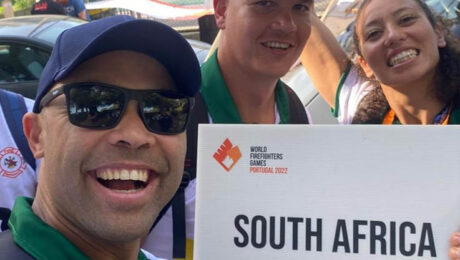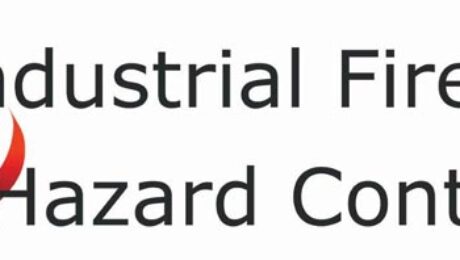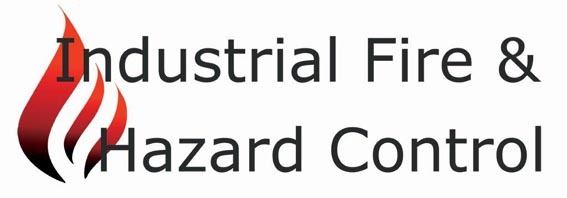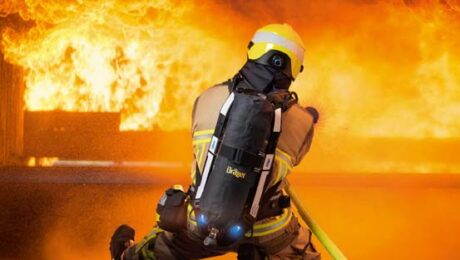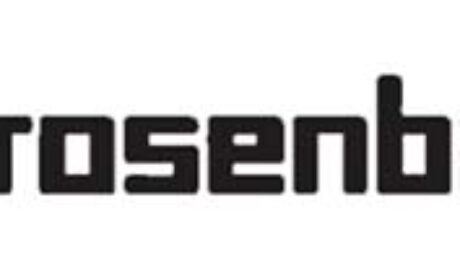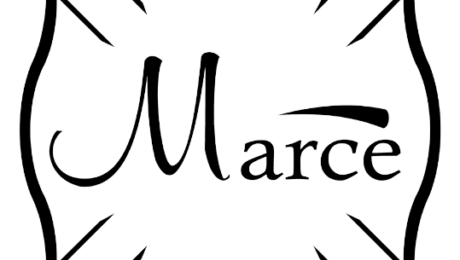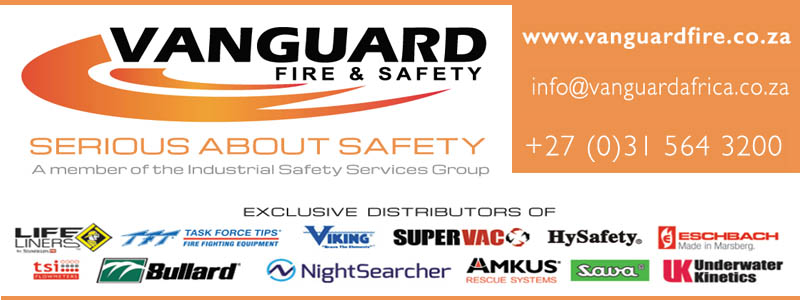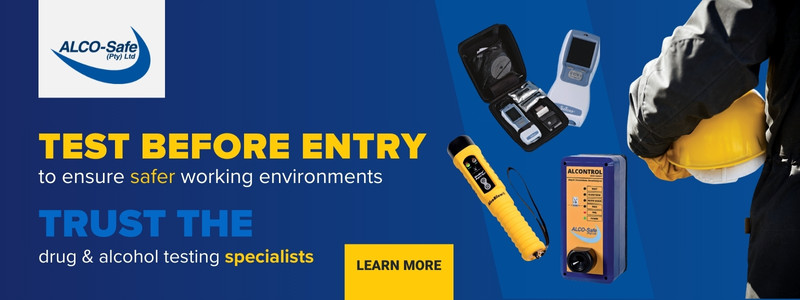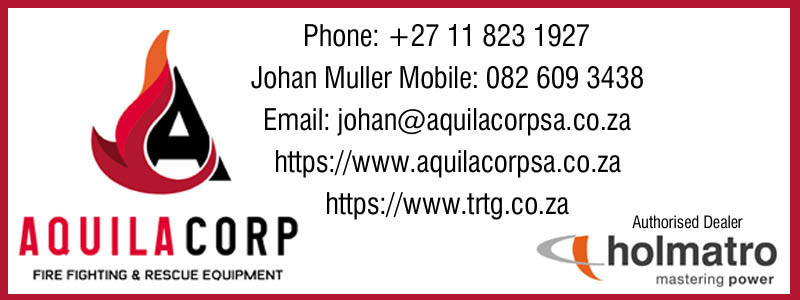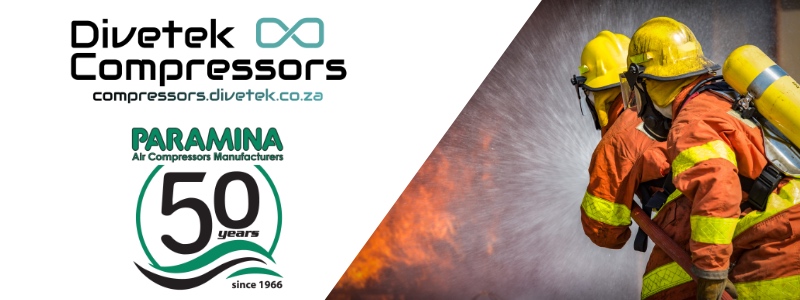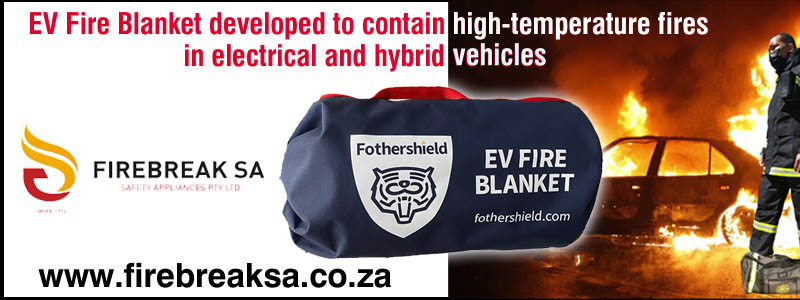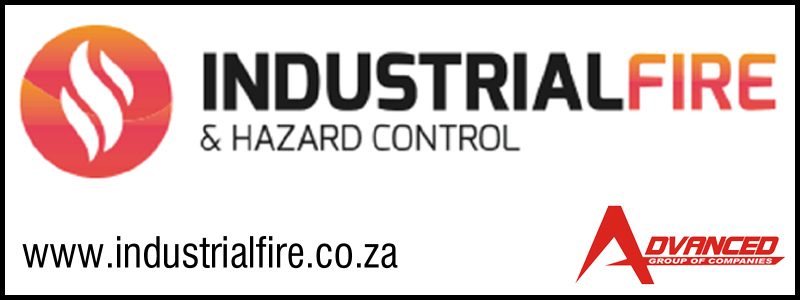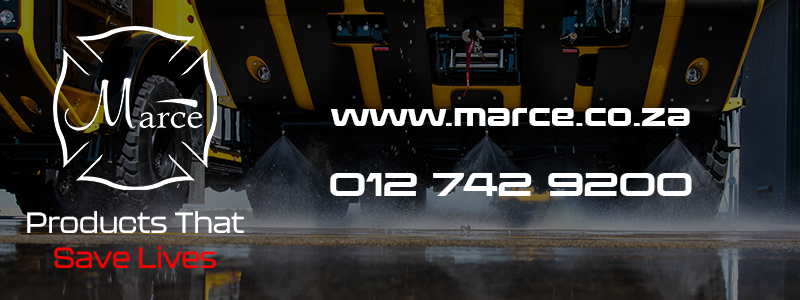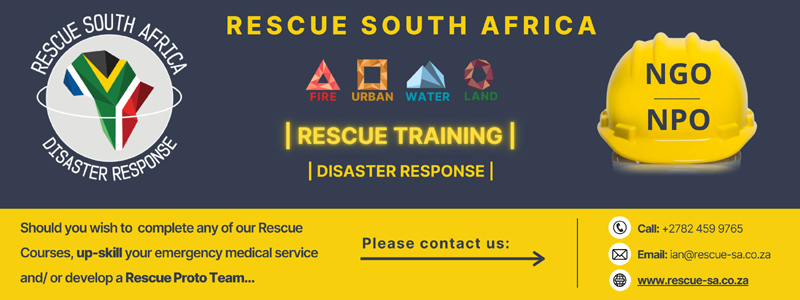Lessons learnt from the Boksburg gas tanker explosion
Firstly, may we, the Safety First Association and its members express our shock and sincere condolences to those who lost family members due to the gas tanker explosion on 24 December 2022 in Boksburg. Our thoughts and prayers are with you all and we hope and trust that those who are injured and traumatised will recover soon.
In South Africa, we have various vehicles transporting hazardous materials daily. Most people have no idea of the risks related to the types of dangerous and hazardous goods being transported on our roads, what could happen should an accident event occur, and even how they are transported. Hazardous gasses are transported in pressurised LPG tankers, carbon dioxide tankers, oxygen, chlorine and acetylene tankers. While others may be transported in a liquid form in pressurised tanks or cylinders on trucks and even bakkies. Then we have the large tankers carrying flammable liquids such as petrol, paraffin, solvents, diesel and jet fuels, etc. in unpressurised tanks. There are also trucks carrying solid and powdered materials like ammonium nitrate and explosives. Corrosive acids and alkalis also have to be transported. Any of these tankers or vehicles can and have been involved in unfortunate incidents in the past.
I waited a few days since the Christmas eve gas tanker explosion incident for incident information to be publicised, so that a logical incident assessment can be made, based on the information available and my insights as an experienced incident investigator. In time, the other formal incident investigations should provide the actual incident causes going forward.
What happened?
Stitching together the press and media reports let’s perform an assumed gas explosion incident scenario assessment.
The incident background involves a gas tanker reported to be travelling from Richards Bay to Botswana in a contracted haulage carrier company’s Hazchem (hazardous chemical risks labelled) designated tanker vehicle with non-company employee driver who was reported as a suitably trained, licensed and professional permitted driver with reported some 7 years of driving experience, apparently obtained from a third-party Employment Agency. At this stage we are unaware of the hazardous goods travel route and had the route been formally risk assessed and approved for use. Secondly, we are still uninformed to what extent the tanker driver was informed and instructed on the assessed and approved travel route, which should have at least one overnight rest stop due to the travel distance involved.
It is assumed the travel route was not along the N3 from KZN, but from Richards Bay via Mpumalanga, which is likely why the tanker was passing through the Boksburg area. I was recently in the East Rand area and got lost as the road signage is poor to non-existent. That being the case, the employment agency driver could have easily got lost and taken a wrong turning, ending with the tanker being caught under a low height capacity bridge with poor warning signposts. A pre-incident bridge photo that has been published shows a small and poorly visible warning sign displayed on the bridge parapet railing. The bridge’s concrete beam also shows damage where numerous previous vehicles would have impacted with it. Furthermore, the published photographs of the bridge site display a steep road profile decline entry into the bridge, which means the long tanker has its back wheels up the slope adding to the tanker’s height on entering under the bridge. Another published photograph of the tanker wedged under the bridge shows possible evidence of fire flames, so the fire ignition may have been caused as the tanker got stuck under the bridge. Apparently, the driver realising there was a gas leak and a serious incident risk immediately called for emergency help. He was also said to be involved in deploying barrier tape and warning the spectators to evacuate the area as gas was escaping. But without any heeding his warning, they became victims. Such actions suggest the driver was risk trained and so took the appropriate incident prevention actions.
On arrival of the emergency services (fire brigade and police), they automatically become the incident site custodians to manage the site and the risks. This would involve managing the gas leak and fighting the fire when it occurs, as well as managing and stopping road access to the site, and due to the gas risk enforcing the evacuation of the area of all the bystanders, etc. But, it appears that no enforced bystander or other evacuation was implemented.

Why did the gas tanker catch fire and explode? Safety things to note:
1. LPG is stored as a liquid under pressure in pressure tanks, tanker cylinders and in the domestic and other gas cylinders used by us all. When the gas pressure is released the LPG liquid rapidly vapourises into a gas that occupies about a 270 times larger gas volume than a 1 litre of LPG’s liquid volume. It is believed that the driver knowing the risk therefore called for the emergency services help to manage the incident.
Note: The Emergency Management Services adopt the commanding and managing responsibility of any incident site on their arrival.
2. LPG is heavier than air so it will sink and accumulate into the lower lying areas under the bridge, and when the gas vapour is at a 2% to 9.5% mixture in air it only needs a nearby spark, a spectator cigarette or something at some 450°C to ignite it.
LPG being a heavy gas would raise oxygen out from under the low bridge area, giving an oxygen deficient atmosphere such that nearby vehicles were not able to be started, as was reported by taxi driver/s who lost their vehicles in the explosion. And for this same reason, the driver was hospitalised as he was reported to suffer from an oxygen deficiency exposure.
3. On ignition the accumulated leaking gas, from an unknown source, possible from a hot exhaust, electric spark or cigarette, etc., the leaked LP Gas will flash back to the leaking tank, heating the tank (as the flames and heat, about 1 980°C, was confined against the tank against the bridge’s concrete deck base), where pressurised LP liquid in the tank is heated, and with reducing gas leak pressure, the LPG liquid rapidly changes to LP Gas which will over pressure the metal-weakened fire-heated tank until the tank ruptures causing a fire related BLEVE (Boiling Liquid Expanding Vapour Explosion). This then generates a massive high heat and energy fire ball of several hundred meters in diameter, due to the tanker volume of LPG involved.(Note, steel melts at about 1600°C).
Considering this assumed incident sequence of events, now leaves us with questions from which lessons can be learnt.
Incident lessons that can be learnt
Lesson one:
The authorities and the public are relatively unaware of the risks related to the transportation of hazardous materials through their town and community areas – in this tragic case Liquid Petroleum Gas (LPG). What are the dangerous and hazardous goods that are transported daily in your area? Are they being transported through your community high-risk areas? Have specific approved high-risk transportation routes been established and their use enforced? Are these vehicles suitably approved and permitted to transport such hazardous goods?
Lesson two:
Was there an adequate hazardous good transportation route and driver knowledge and capacity assessments done? Currently, we are unaware if there was any transportation route risk assessment performed by the transport contractor. Was the route selected a normal transportation route or was it changed due to a holiday season quiet route from Richards Bay to the Reef, so to avoid the busy N3 traffic routes via Durban? It seems possible that the route selected involved the driver travelling through Mpumalanga ending in Boksburg, where I recently got lost travelling from the N17 towards the N12 as the road route signage is poor. Question: was this route the normal tanker route or an adapted one so as not to subject the festive season traffic on the N3 to a hazardous load risk? Had the authorities perhaps placed a limitation on the heavy transport haulers using the N3 during this festive season period, and thereby forcing the transport contractor to use other less familiar and possible non-risk assessed routes? There are many lessons to be learnt within this second lesson learning point.
Lesson three:
Assuming the driver got lost, took a wrong turning and got his tanker wedged under a low level clearance height bridge with warnings poorly marked. Press photos show the tanker wedged under the bridge, with no obvious fire ignition showing, although it is obvious that some valve on the tanker top was damaged and so it was leaking LPGas into the atmosphere. The knee jerk response is/was to blame the driver for the deaths (now standing at 34). Yes, he wedged the tanker. No, he did not deliberately or intentionally start the fire. He apparently acted responsibly by highlighting the gas risk and so implementing “keep clear” precautions until the emergency services arrived. He was not responsible for the site after the emergency services (fire brigade and police) arrived and started managing the site. He had no authority to order a site evacuation. However, the general feeling is everything that happened is his fault. This lesson suggests there are more root causes to this incident than just putting the blame on the tanker driver.
Lesson four:
Was the fire-fighting adequate? LPG is an E class fire which is normally extinguished by shutting off the gas supply or by firefighting using dry powder, or carbon dioxide, or foam into the gas stream to extinguish the gas fire. In this incident, water hoses were used in an attempt to keep the tanker’s tank cool, but this would not extinguish the gas fire. Unfortunately, the gas leak fire was against the bridge base, so the flames and fire heat were in contact with the metal tank surface now being heated, thereby softening the metal until the tank under pressure ruptured, releasing the gas liquid to cause a BLEVE and its huge fire ball and explosion which destroyed lives and property. The lesson is that fire-fighting must always consider the material burning and the environment impacting on extinguishing a fire.
Due to the gas leak fire location in this scenario, there was a slim chance of extinguishing the fire whereas a tank rupture and explosion was a likely outcome. Therefore a full area evacuation was required but was not ordered and/or effectively implemented, resulting in damage and fatal injuries from the BLEVE, which caused an explosive shock wave and intense fire balls impacting everything in at least a 100m diameter area. The explosion shock blast caused the roof and ceilings of the nearby Tambo Memorial Hospital to be blown off with some walls collapsing. The bridge, railway lines and nearby vehicles were destroyed. Surrounding houses were damaged. People in close proximity were either burned or killed.
Lesson five:
Did the bridge display adequate and obvious warning signs indicating its low clearance and clearance height dimensions? Media pictures show a poorly visible bridge warning sign which many drivers had obviously not seen because the bridge’s concrete beam can be seen as damaged multiple times from vehicle impacts. That suggests the warning signage was totally inadequate and should have been upgraded to suitable visible signage by the municipal authorities. With the height warning signage being in a poor state, the driver could easily have misjudged the height clearance for his tanker truck, which was evident in the photo of the truck under the bridge. Knowing that the signage was inadequate, why did the local council (traffic department) not improve the low bridge warning signage with clear visible warnings on the approach road?
Will the bridge be rebuilt as per the destroyed one, another low-level clearance bridge? More than likely, because of the railway lines alignment issues. If so, more bridge vehicle collision contacts can be expected. An over-the-rails design bridge is required to eliminate this low bridge hazard, but at a significant cost.
Lesson six:
Are the local authorities and emergency services up to speed to handle such incidents? The media has been asking such questions for a while now, as it is known that suitably trained and experienced staff shortages and equipment supply and maintenance funding issues exist and are known concerns in nearly every South African municipality and town council. Was fire-fighting foam available for use at this incident site? We also ask, when will the destroyed fire water tanker be replaced following this incident?
Conclusion
This assumed incident risk assessment highlights that many factors, like evidence, forensics, witness and response statements, etc, will need to be considered, by the hopefully experienced incident investigators, during the formal incident investigation and its issued report.
Let us hope that some points from this incident risk assessment of assumed questions and lessons will be considered during the investigations and implemented going forward in memory of those who tragically died.
By Leighton Bennett, the Safety First Association Chairperson, and a professionally registered OHS Professional and Risk Management Consultant.
www.safety1st.co.za

- Published in News, Uncategorized
Divetek Compressors
Divetek Compressors was the brain child of Andre Vosloo, under his guidance with David Cohen the Director of Divetek Pty – David Cohen – Divetek Compressors was born. Initially Andre simply “freelanced” as a compressor technician since leaving a major competitor in 2016.
With the recent joining of Corné Grobbelaar to the team it was evident that there was a lack of technical expertise available within high pressure applications in South Africa not only within the “breathing air” systems but also within industrial and military systems.
We have grown from strength to strength and now provide comprehensive services within the industry.
Divetek now as a group of companies and multiple branches provides turnkey solutions both within the scuba industry and within high pressure applications.
We also import and hold distribution rights on a number of major brands, Faber Cylinders, Luxfer Cylinders, Midland Diving Equipment, OTS Ocean Technology Systems, Paramina Compressors, Orca Torch, Deepblu Diving Computers, San-O-Sub Diving Equipment, as well as our own range of imported Divetek Diving Gear.
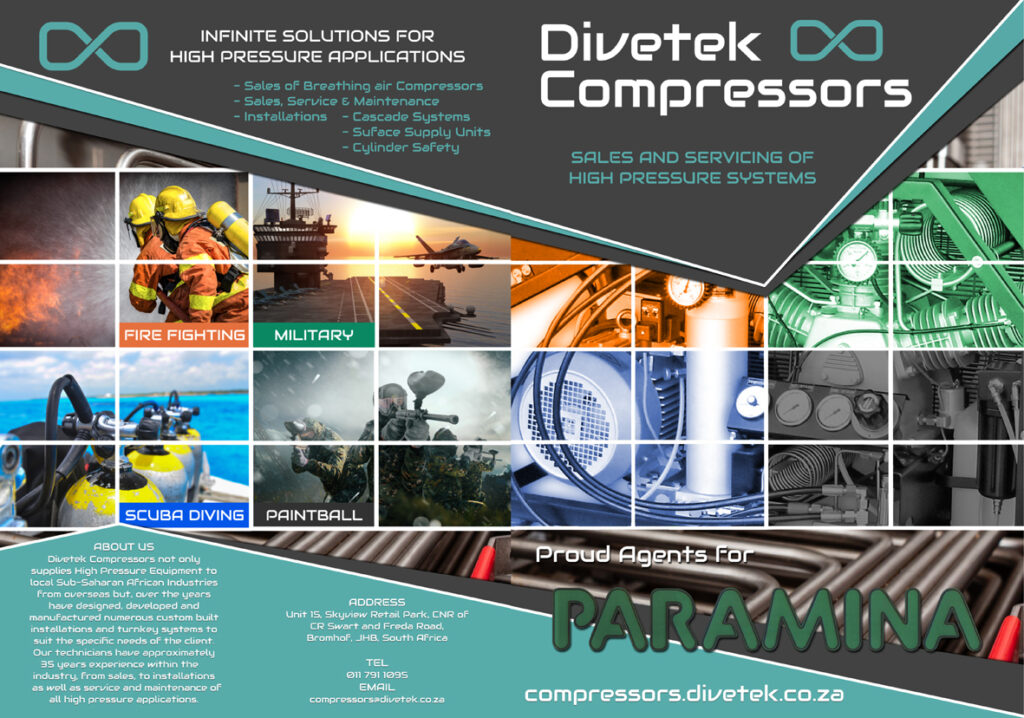
Our Johannesburg premises has been recently extended and now covers 1400sqm from where stock is on hand and we supply directly to the public – visit www.divetek.co.za for a full listing of products and services available.

Contact Divetek Compressors
Unit 14, Skyview Retail Park,
CNR CR Swart and Freda Road. Bromhof, Johannesburg.
Tel: +27 (0)11 791 1095
Email: sales@divetek.co.za / compressors@divetek.co.za
- Published in Uncategorized
Sysman for 911 and Disaster Management solutions
Sysman is renowned for providing robust, facility-rich and affordable 911 and Disaster Management solutions which it has been doing for the past 34 years.
The effectiveness of an emergency control system is governed by many factors. These include quality and reliable applications all of which must be tightly integrated into one homogeneous system. To this end we offer a portfolio of solutions, some highlights being:
• ESS: a web-enabled, 911 call taking and despatching solution, with a real time, electronic video wall, comprehensive reporting, integrated maps with GIS capabilities, Mobile Data Terminal integration, a clean graphical interface and much more.
• iFIG: an IP based Station Control system fully integrated with ESS. It offers Bells, PA, Intercom, Bay doors, lights, robots, access control and more.
• Mobile Data Terminals: integrated with ESS supporting despatch notes, status updating, on board, voice guided navigation to an incident scene. devices are GPS tracked. Streaming video from an incident scene is also supported. Companion app on devices carried by responders allows for data capture and communications with the control centre and each other without the need for radios.
• Fleet Management: integrated with ESS. GPS vehicle tracking and vehicle stats and driver behaviour reports such as harsh braking and over speeding. Fuel and Workshop Management Modules also available.
• WAVE: a Radio over IP and Voice over IP solution supporting different types of radios on different channels and inter-operability between two or more emergency services. Supports multiple devices including existing radios, laptops and PCs and Smart Phones. Use a smart phone as a radio by pressing a soft PTT button. Widely used by the emergency services, the military and airports throughout the world this solution is has now been installed by Sysman in various sites around South Africa.
• Disaster Management: a web enabled, internationally acclaimed Disaster Management system which can be operated from anywhere such as an office, field or JOC centre. It is a unified command system which improves role player coordination, response and information sharing. Departments can plan for events/disasters and the like but can also activate a fast response to unplanned events. The mass communication required during such events/incidents/ disasters is a ‘must-have’ tool for every disaster management organisation. So too is effective feedback from the disaster scene using cellular devices
• Service Call Management: an application which enables services calls to be scheduled; allocated to service personnel (each of whom carry a tablet device); for work performed during a service call to be captured and transmitted via the Cloud to the service centre, together with many other facilities that maintains communication with all parties and permits performance monitoring. The software is adaptable to any type of service call.
• REMRAD: a completely revised and updated solution that links the fire detection systems in commercial and industrial premises to an emergency monitoring centre. The system can be monitored by up to four emergency centre (typically fire, police, ambulance and security) and supports two-way speech. The new system operates in the cloud using cellular networks. Automatic switching between networks is supported for failsafe and redundancy reasons.
Our 2018/19 portfolio of solutions will impress and may even surprise you. Invite us to talk to you or arrange to visit one of our many installations. You will find us knowledgeable and capable of delivering high quality solutions that will materially assist with your goal of improving service delivery to residents within your area of responsibility.
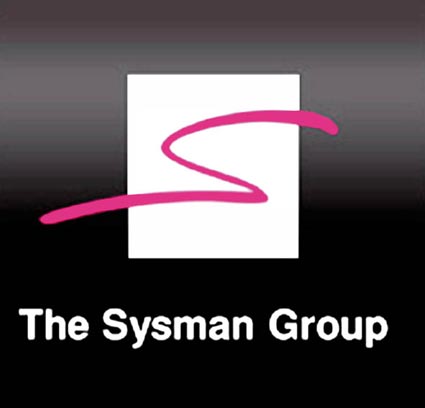
Contact Sysman
Tel: +27(11) 300-3300 or 0861-SYSMAN
Fax: +27(11) 219-7430
Email: sales@sysman.co.za
- Published in Uncategorized
World Fighter Games
Charnaud have proudly congratulated their ambassadors Baigum Abrahams and Emile Conrad who competed their hearts out at the WORLD FIREFIGHTERS GAMES.
Both attained amazing results.
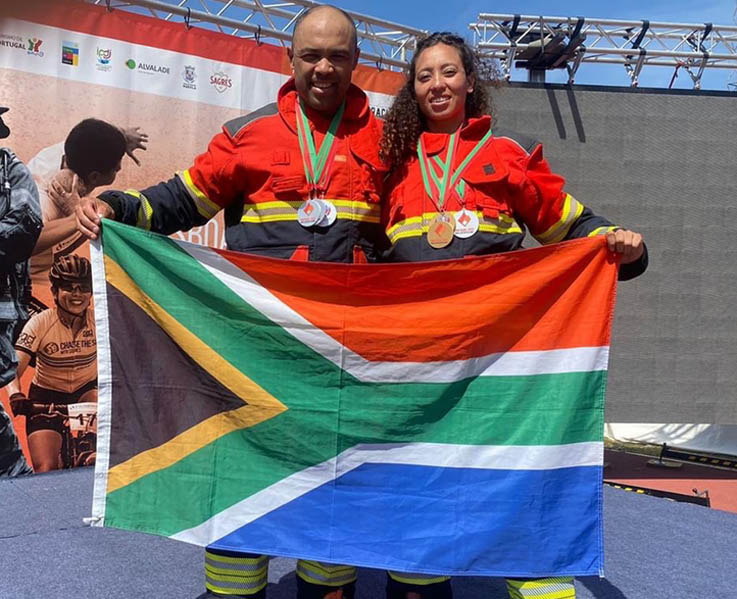
Baigum received the following medals:
1 x silver for 100m sprint
1 x silver medal for mixed tug of war
1 x gold for 200m sprint
1 x gold for 400m relay
1 x gold for female tug of war

Emile achieved the following:
10th overall in Toughest firefighter Alive competition
1 x Silver medal for Toughest firefighter Alive in his age category
1 x Silver medal for overall indoor rowing event.
1 x Silver medal for Stair running event in his age category.
1 x Gold medal for tug of war mixed team.
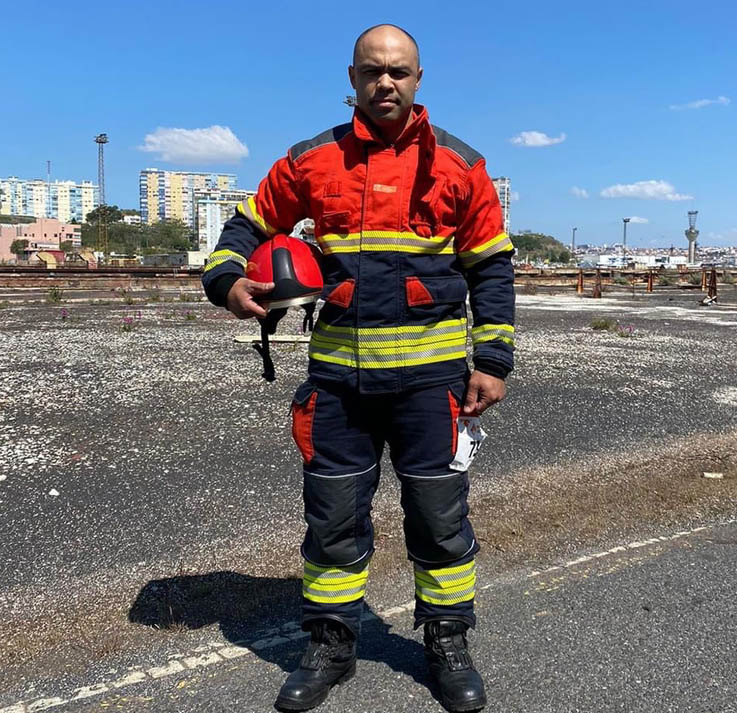

- Published in Uncategorized
Firebreak – for fire safety solutions
Firebreak SA (PTY) LTD, a BBBEE Company was founded in 1996 to provide quality products and great service which exceeds the customers expectations. Our knowledgeable sales staff have a combined 100 years of experience within the fire and safety industry.
Click here to download Firebreak SA’s brochure:
Firebreak is in business to provide a total package of safety and fire solutions. Their product range encompasses a wide range of products such as permanent and portable breath testers; gas detection equipment; chemical suits; fall arrest devices; confined space escape products and much more.
Firebreak SA provide training and full service back up to this range of equipment:-
• Scott Agent (SCBA’s) / 3M Products
• MSA Agent (SCBA’s / Gas Detection)
• LIFELOC Portable and Permanent Breath Testers
• DU PONT range of chemical suits
• TFT / Vanguard Fire Fighting Products
• Bullard / Viking Fire Protective Equipment
• LYMAE Advanced Fire Protective suits & coveralls
• KARAM Fall Arrest / Height Safety Solutions
• Darley (ex-USA) fire tools (Hooligan Tools/ Axes / Pike Poles)
• Fire Servicing / Inspections / Detection systems (SABS Accredited)
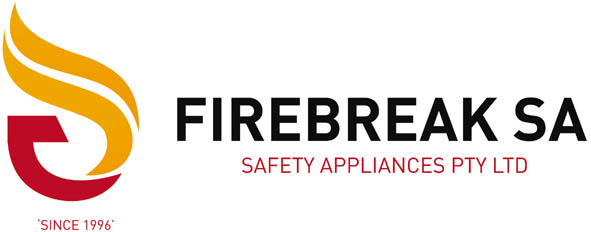
Contact Firebreak SA (PTY) LTD …
Offering exceptionally fast service backed up by “staff steeped in experience” … willing to help you solve your every problem.
Tel no: +27 (0)11 908 6960 or visit their website www.firebreaksa.co.za
Team Members:
Duncan Ramsden: +27 (0)82 787 6484 / duncan@firebreaksa.co.za
Blane De Meillon: +27 (0)79 493 7958 / blane@firebreaksa.co.za
Paddy Mallett: +27 (0)63 692 5304 / paddy@firebreaksa.co.za
Freddie Allworth: +27 (0)82 568 0164 / freddie@firebreaksa.co.za
Ramesh Jeram: +27 (0)82 880 2723 / ramesh@firebreaksa.co.za
Duane Basson: +27 (0)82 253 6885 / duane@firebreaksa.co.za
Josh Mahlangu: +27 (0)72 126 9459 / josh@firebreaksa.co.za
Etienne Jacobsz: +27 (0)82 880 2696 / etienne@firebreaksa.co.za
Darren Rogers: +27 (0)71 244 0789 / darren@firebreaksa.co.za
Donovan van der Schyf: +27 (0) 82 574 0782 / donovan@firebreaksa.co.za
- Published in Uncategorized
Industrial Fire & Hazard Control your single source solutions company
Industrial Fire & Hazard Control, a proud member of the Advanced Group of Companies, is intently focused on mitigating risk in the fire, rescue, hazmat and disaster management arena. We strive to render an in-depth subject matter knowledge base, the prerequisite skills set, access to technologically advanced products, world-class service rendering and the passion to serve in order to meet our clients ever growing requirements. For Industrial Fire & Hazard Control there is no room for error, no room for anything less than the very best . . . our clients demand it and we deliver on it!
We are by no means a seven-to-five company, everything that we do is personal, every interaction, every product that we manufacture and supply; our people are personally involved and take ownership and responsibility because our products are used to save lives and property. We are serious about our business because you are serious about yours. We have a PASSION for the fire, rescue, hazmat and disaster management industry and, as a level 2 B-BBEE company, we take our Codes of Good Practice seriously. As we continually strive for excellence, we are making a difference to everyday lives, one product at a time.
Industrial Fire & Hazard Control … there when you need us!
Visit us at www.industrialfire.co.za ; The Home of Imagineering.”
- Published in Uncategorized
DRÄGER takes the weight off your shoulders with the PSS® AIRBOSS
Firefighting is teamwork and we at Dräger are part of your team. Our contribution to the team is the equipment that protects you during your mission. Only when you trust your PPE and feel in tune with it, can you perform at your very best. So, we’re proud to support you with groundbreaking solutions such as our exceptionally lightweight new Dräger PSS® AirBoss with NANO Cylinder.
Nothing can hold you back
DRÄGER PSS® AIRBOSS SUPERIOR ERGONOMICS
Move freely as if there was nothing on your back: With threestep height adjustment, a pivoting and sliding waist belt, you’ll move with ease in difficult circumstances.
EXCEPTIONALLY LIGHTWEIGHT
One of the lightest firefighting SCBAs on the market due to engineered lightweight materials. Smart design choices make it feel even lighter than it already is.
FUTURE-PROOF CONNECTIVITY
Connected solutions increase your safety and efficiency: You know your situation. And your team members and leaders know it as well – so they have your back.
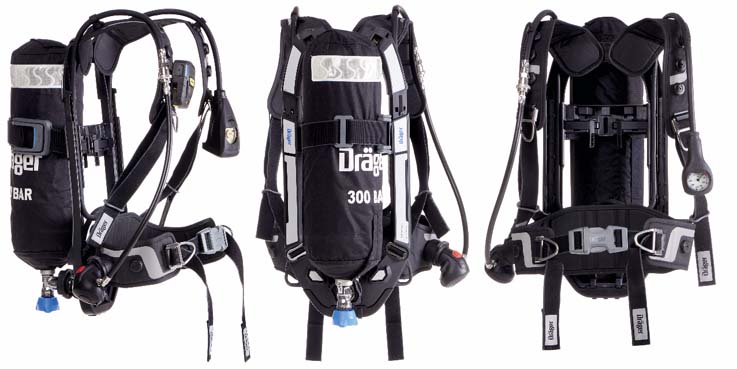
Learn More Here : https://www.draeger.com/en_za/Products/PSS-AirBoss
We take the weight off your shoulders
Our cylinders feature non-limited life design (NLL). This means, by design they can be used indefinitely when proper maintenance and periodic inspections are fulfilled. It is an investment that not only gives you peace of mind during an incident, but also reduces your cost of ownership in the long run. They also offer a very low weight – which allows for a longer duration of air consumption. You can increase air supply even further by using a twinning option.
NEW: DRÄGER NANO CYLINDER (NLL), TYPE 4 Designed with PET liner and carbon nanotube technology: Currently one of the lightest gas cylinders in the market with a shell weight of 2.8 kg. This means 47 % less weight compared to conventional steel type 1 cylinders.
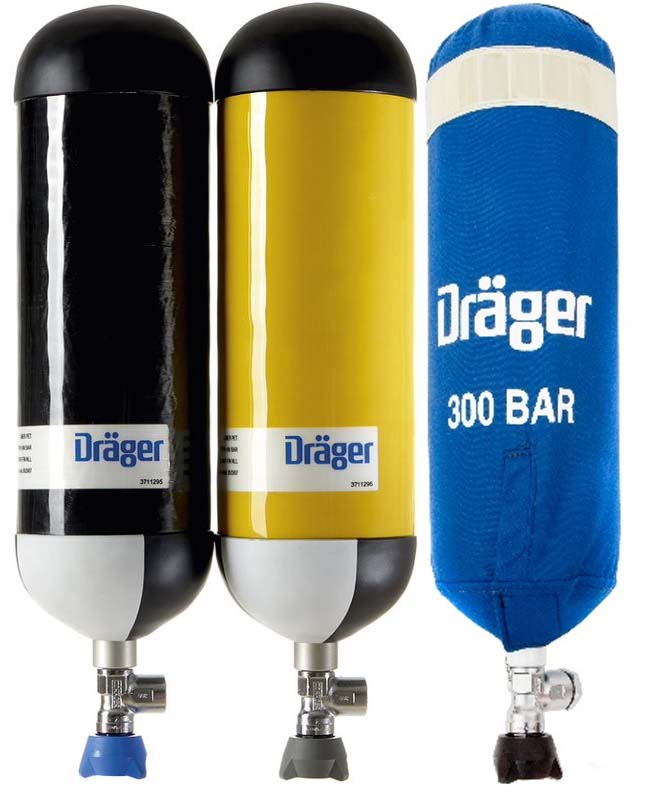
Reduced weight allows for two-cylinder configurations, supporting extended duration operations
Extreme weight reduction supports firefighters by reducing fatigue and increasing agility
Full composite cylinder can be used just like any other cylinder, but comes with a a non-limited service life decreasing fire departments investment needs
TWO-CYLINDER CONFIGURATION With their low profile, our dedicated twinpack cylinder systems are suited for wearing in confined space situations and extended duration operations (EDBA). A twin cylinder package with a convenient carrying handle can be carried as a single unit.
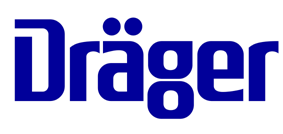
Learn More here : https://www.draeger.com/en_za/Products/Compressed-Air-Breathing-Cylinders
Learn More : https://www.draeger.com/en_za/Fire-Service
- Published in Uncategorized
WEBER HYDRAULIK GMBH takes another step towards sustainability with the certification according to ISO 14001 and ISO 50001
Both compliance with environmental guidelines and the efficient use of energy contribute significantly to the sustainable orientation of companies. At the WEBER HYDRAULIK site in Losenstein, both certifications have now been successfully completed. “Sustainability is a very important topic for us. We are constantly working on optimizing our processes with regard to the set environmental and energy targets. The ISO 14001 and ISO 50001 certifications now show quite objectively that we meet very high requirements in this regard,” says Günther Rebhandl, Head of Quality Management at WEBER- HYDRAULIK, who is pleased with the success.
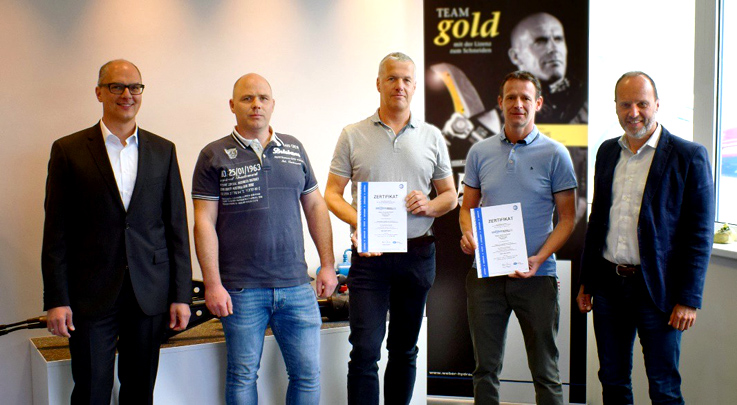
Proud of the certifications passed: Bernhard Obermayr, Mathias Pranzl, Albert Koppenberger, Günther Rebhandl, Kurt Sperrer
Environmental risks can be reduced through sustainable environmental and energy management. At the same time, environmental performance is made transparent and targeted improvement measures are devised. Lower consumption of resources such as energy and water, plus the reduction of disposal costs also offer an economic advantage over the competition in the long term.
Environmentally friendly energy and heating technology
At its site in the Enns Valley, the innovative manufacturer goes far beyond the required measures. Photovoltaic systems installed on the roof of the building provide clean electricity from solar energy. With an output of 364 kWp, part of the electricity used in production is self-generated. “The proportion of electricity requirements that can be covered by solar energy has been continuously increased in recent years,” explains Albert Koppenberger, who is responsible for plant maintenance at the Losenstein site.
The heating system is also powered by wood chips in an environmentally friendly manner. “Our entire heating requirements are covered by the wood chip heating system,” Koppenberger continues. This makes the Losenstein site independent of oil and gas.
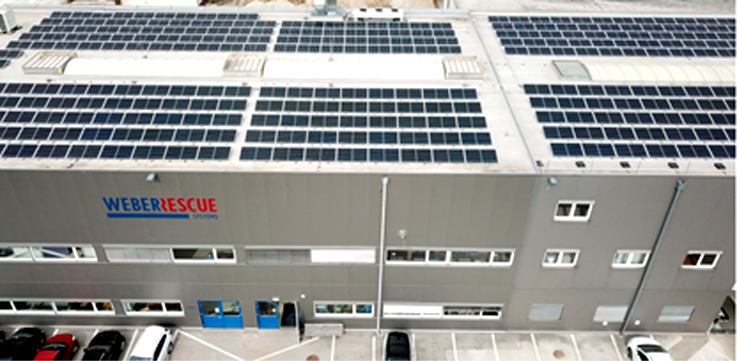
Photovoltaic plant with 364 kWp installed capacity
E-mobility reduces CO2 emissions
In March 2019, it was discovered that transportation causes a large part of the CO2 pollution at the Losenstein site. “By using e-mobility for work trips, we saw great potential to reduce the site’s CO2 emissions. That was the starting signal for the e-mobility campaign,” says Koppenberger. An attractive leasing model for e-cars was worked out for employees at the Losenstein site. In the meantime, around 70 employees have taken advantage of the campaign. The electricity required for the e-cars also comes from the company’s own photovoltaic system. Employees can charge their vehicles free of charge at the 20 newly installed charging points.

Kerstin Uitz und Albert Koppenberger, who handled the e-car campaign with the works council.
Sustainability, environmental protection and quality

“Passing the certifications once again proves the consistently high quality orientation as well as the environmentally friendly and energy-efficient design of all processes in the company,” confirm Kurt Sperrer and Bernhard Obermayr as managing directors at the Losenstein site. “We are convinced that we can also offer our customers a decisive advantage with our sustainable orientation”.
About WEBER RESCUE SYSTEMS
For more than 40 years, WEBER RESCUE SYSTEMS has proven itself as a specialist for rescue equipment, by developing innovative and powerful rescue tools. „The right tool for the right situation“, this is the basis for our aim to offer a one-stop shop for rescue systems. The latest generation of hose cutters, spreaders and combi tools can easily be converted to E-FORCE3 battery- powered devices via a new connection point. Due to the newly developed switch value, our tools always work in the maximum speed range and the optimum gear. In addition, we offer a wide range of useful additional products for rescue organisations on our website.
WEBER-HYDRAULIK GMBH
- Published in Uncategorized
Rosenbauer – supplier to the South African fire community
The Rosenbauer International Group of Companies with its Headquarters in Leonding, Austria, has become the largest exporter of specialty fire fighting vehicles and is today the leading manufacturer in this field.
Founded in 1866, Rosenbauer has become an international group with 13 manufacturing companies (3 in Austria, 2 in Germany, 1 in Russia, 1 in Spain, 3 in USA, 1 in Singapore, 1 in Saudi Arabia, 1 Slovenia). And now from 2018 Rosenbauer South Africa is manufacturing locally in Midrand.
Click below to open and download:
This allows the company to serve the fire services around the world with products conforming to the various kinds of standards (European = EN or American = NFPA).
The fire fighting core components (pumps, foam admixing systems, roof turrets, hose reels etc.) are all designed and manufactured in house to perfectly work as an integrated system for maximum efficiency and operator friendliness.
Latest technologies (FEM calculations and CAD systems) and machinery provide for the industrial quality background for tailor made solutions.
With Metz as part of the Rosenbauer Group, the full range of Turntable Ladders (from 20 to 61m working height) and Hydraulic Platforms (27 – 55 m) is part of the manufacturing program.
Innovative and ergonomic design, latest technology and superior quality are common features throughout the production range of all group companies.
Rosenbauer is proud to be a long term supplier to the South African Fire Community, comprising Civilian and Military Airports, Municipalities, Industry and Navy.
To ensure the local long term service and support of the products, Rosenbauer South Africa is based in Midrand, Gauteng.
Qualified technical experts can handle all routine service through to comprehensive refurbishment jobs in these facilities, as well as manufacturing and assembling.
Furthermore Rosenbauer is offering the full range of Fire & Safety Equipment with exclusive products such as personal protection equipment, the most powerful portable generator available in the market, positive pressure ventilation units, CAFS Trolleys, UHPS systems and a total of more than 3000 fire fighting products etc.

Contact: Rosenbauer South Africa
Michael von der Heyde
Mobile: +27 (0)72 925-5959
PO Box 1555 Halfway House 1685
Tel: +27 (0)11 805-7912 Fax: +27 (0)86 511-6082
Email: Rosenbauer.za@rosenbauer.com
- Published in Uncategorized
MARCÉ – products that save lives
What does this mean for Marcé as a Company? When selecting a Service Provider to build you a fire truck or supply you with specialised fire equipment that will be used to save lives, one has to ask the question; Who will respond and understand my needs and supply me with the best possible solution available in the market?
Click below to download file
MARCE-FIRE-FIGHTING-TECHNOLOGY.pdf
There are several manufacturers and suppliers who builds fire trucks and supply specialised fire equipment and then there is Marcé. Marcé always comes up with innovative ideas, engineering solutions and new product developments to enhance operational capability in the Emergency Services.
Marcé has achieved several engineering feats over the past few years that saw our company grow from a small manufacturer to a Global player in the world market. Some of our innovations and achievements, to name a few, include:
• Development of our own range of 4×4, 6×6 and 8×8 Airport Fire Fighting Vehicles (ARFF) with a local content exceeding 60%
• Development of our own range of electronically controlled roof and bumper turrets
• Development of a vehicle simulator as part of the supply contract on our Rhino Range of Airport Fire Fighting Vehicles
• Development and manufacturing of local crew cabins for both ARFF and normal fire truck applications
• Our own advanced range of SCBA equipment
• Our own range of Firefighting Nozzles and Hoses
• Building a one-of-a-kind Custom Industrial pumper that uses a water filtration system at a flow of 14 000 litres per minute
• Development of our own software for command and control, asset & fleet management as well as electronic vehicle and pump management systems.
Marcé is committed more than ever to South African job creation and strives to constantly increase local content in all our products, whilst also having an ever-expanding international footprint. We not only manufacture fire fighting vehicles in our manufacturing plant in Centurion but also in our Cape Town plant, with our Polokwane plant handling all our branding requirements apart form also being a fully-fledged service centre.
Marcé is very proud to have a family Nationally and Internationally that we call our clients. In the trying times we are in; we are committed more than ever to take the Emergency Services fraternity forward with more quality products and innovations. Each enquiry motivates our sales team to leave no stone unturned in finding the right product to ensure the best value for money and maintain the highest standards that Emergency Services deserve.
Simply put – MARCÉ EXISTS TO SAVE LIVES

Contact Marcé Fire Fighting Technology (Pty) Ltd
1012 Ergon Road, Lyttelton, RSA
P O Box 8361, Centurion, 0046 RSA
Tel: + 27 (0)12 742 9200
Fax: + 27 (0)12 742 9299
E-Mail: sales@marce.co.za
Website: https://www.marce.co.za
- Published in Uncategorized




